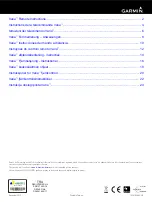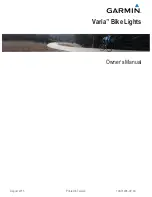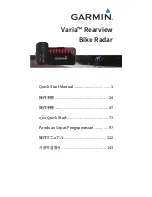
P
AGE
4
Section 4 - Sanitary Mounting
Section 4 - Sanitary Mounting
Section 4 - Sanitary Mounting
Section 4 - Sanitary Mounting
Section 4 - Sanitary Mounting
The sanitary style sensor may be clamp-mounted for clean-in-place applications by using a
sanitary clamp-type tee or ferrule and clamp.
1.
Install a 2-inch sanitary clamp-type tee or ferrule into the process line or vessel.
NOTE: For a 2" line a special 2" x 2" tee is available from Anderson. Use of a 2" x 2"
standard, or short-outlet tee will introduce calibration errors. Alternatively, the
sensor may be mounted in a 2 1/2" x 2", or 3' x 2' short-outlet reducing tee.
2.
Connect the sensor cable wires to the instrument.
•
Direct Connection
A) Route sensor cable into the instrument through a watertight fitting in a cable entry
hole.
B) Connect sensor wires to the instrument. Refer to the instrument operating manual
for details.
•
Indirect Connection with Junction Box (see Section 5.4 for details)
C) Mount a junction box that has a terminal strip onto a flat surface. Make sure the
junction box cover can be removed after installation.
3.
Before installing the sensor into the process line or vessel, calibrate the measuring
system with conductivity reference solution using the procedure in the instrument
operating manual.
4.
After calibration, mount the sensor into the sanitary tee or ferrule:
A. Properly seat the sanitary gasket onto the mating surface of the tee or ferrule.
B. Carefully place the sensor into the tee or ferrule, making sure the gasket is in
place and contacting the bottom surface of the integral sensor flange.
C. Rotate the HC1 sensor in th process line so that the arrow on the sensor housing
is aligned with the direction of product flow.
NOTE: If the sensor is not properly aligned with the product flow, calibration errors may
result.
D. Secure the sensor onto the tee or ferrule with a clamp.
NOTE: If the sensor is installed in a temperature cycling process, the wing nut may need to
be periodically re-tightened.
CAUTION:
STEAM STERILIZATION IS NOT RECOMMENDED FOR CLEANING THE
HC1 SANITARY STYLE ELECTRODELESS CONDUCTIVITY SENSOR
.





























